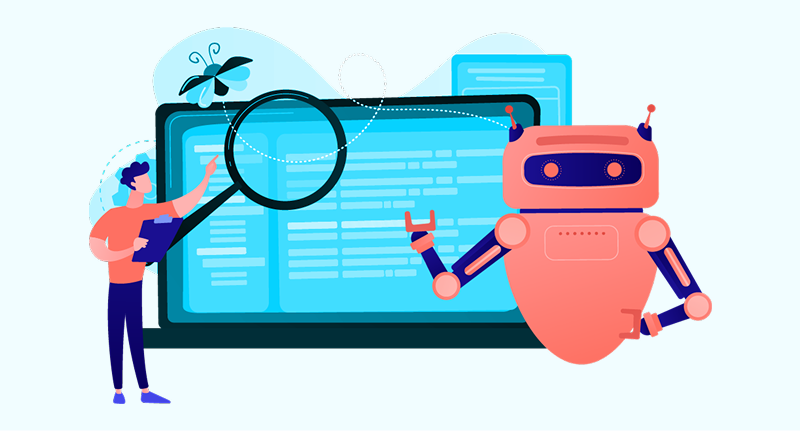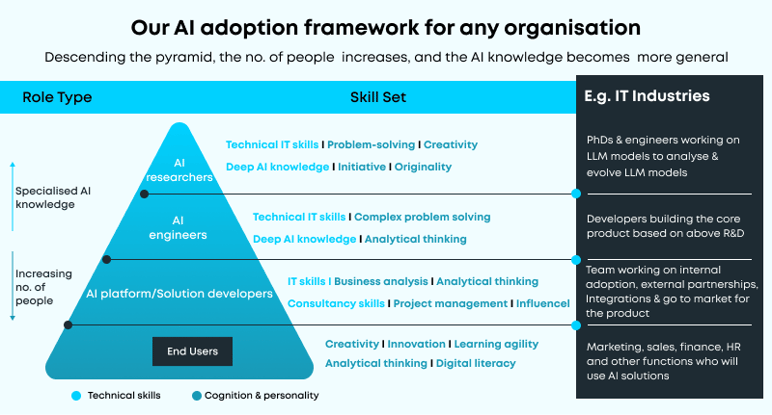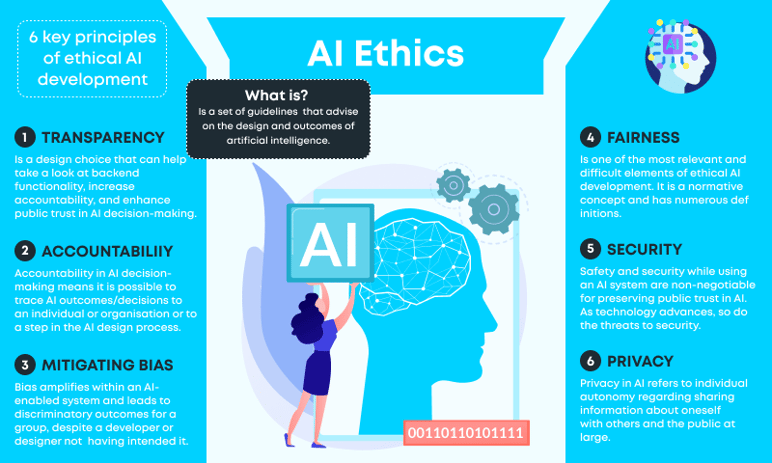Preparing Your Team for AI Integration: Training and Adoption Tips
AI is no longer a futuristic concept—it’s here, and businesses worldwide are adopting AI-powered solutions to drive efficiency, improve decision-making, and enhance customer experiences.
But integrating AI isn’t just about introducing new technology—it’s about preparing your team to embrace and effectively use it. Resistance to change, lack of training, and uncertainty about AI’s role can hinder successful adoption.
So, how do you ensure a smooth AI transition while empowering your employees? Let’s break it down into practical steps.
Educate Your Team on AI’s Role (and Myths)
Before your team embraces AI, they need to understand it. Many employees fear AI will replace their jobs, but the reality is AI is here to enhance their work, not eliminate it.
How to Educate Your Team:
✅ Explain AI’s Purpose – Show how AI will improve productivity, automate repetitive tasks, and support decision-making.
✅ Address Concerns & Myths – Clarify that AI isn’t a “job killer” but a tool to work smarter.
✅ Share Industry Examples – Provide case studies of businesses successfully using AI to enhance efficiency.
💡 Example: Instead of replacing customer service agents, AI-powered chatbots assist them by handling simple queries, allowing human agents to focus on complex customer needs.

Identify AI’s Role in Your Business
AI isn’t a one-size-fits-all solution. You need to map out how it will support different roles within your team.
Steps to Identify AI’s Role:
✔ Assess Current Workflows – Identify time-consuming tasks that AI can automate.
✔ Prioritise AI Use Cases – Will AI help with data analysis, customer engagement, or marketing automation?
✔ Customise AI Tools by Department – AI can optimise processes differently in sales, HR, or operations.
💡 Example: AI in marketing can automate email campaigns, while AI in finance can assist with fraud detection and data processing.
Provide Hands-On AI Training & Skill Development
AI training shouldn’t be complicated. Instead of overwhelming employees, offer small, interactive training sessions that gradually introduce AI tools.
Effective AI Training Strategies:
✅ On-the-Job Training – Integrate AI training into daily workflows.
✅ Interactive AI Workshops – Encourage employees to use AI tools in real scenarios.
✅ Microlearning Courses – Provide bite-sized AI learning modules to build skills over time.
✅ Encourage Experimentation – Give employees access to AI-powered tools for hands-on learning.
💡 Example: Companies using AI-driven analytics should train teams on how to interpret AI-generated insights to make better business decisions.

Encourage AI Adoption Through Change Management
AI adoption isn’t just a tech upgrade—it’s a cultural shift. Employees need to feel included, supported, and confident in this transition.
How to Drive AI Adoption:
✔ Appoint AI Champions – Have internal advocates lead by example in adopting AI.
✔ Involve Employees in AI Selection – Get team feedback when choosing AI-powered tools.
✔ Foster an AI-Positive Culture – Highlight AI’s benefits and success stories across the organisation.
✔ Celebrate Small Wins – Recognise employees who effectively use AI to improve workflows.
💡 Example: A company implementing AI-driven reporting tools should reward employees who use AI to find valuable business insights.
Address Ethical AI Concerns & Build Trust
Employees may worry about data privacy, AI bias, and ethical concerns. Establishing clear AI usage guidelines is key to building trust.
Best Practices for Ethical AI Adoption:
✅ Transparency is Key – Clearly communicate how AI makes decisions.
✅ Protect Employee Data – Ensure AI aligns with privacy laws (e.g., GDPR, Australian Privacy Act 1988).
✅ Regular AI Performance Reviews – Continuously assess AI’s accuracy and fairness.
✅ Encourage Feedback – Allow employees to report concerns about AI bias or errors.
💡 Example: AI in recruitment should be monitored to avoid biased hiring decisions and ensure fair candidate evaluation.
Provide Ongoing Support & AI Upskilling
AI is constantly evolving. To ensure long-term success, ongoing training and support are essential.
Strategies for Continuous AI Upskilling:
✔ AI Learning Hubs – Offer an internal platform with AI courses, guides, and resources.
✔ Mentorship Programs – Pair employees with AI-trained colleagues.
✔ Quarterly AI Workshops – Regular updates on AI advancements & best practices.
✔ Encourage AI Certifications – Support employees in getting AI-related certifications or courses.
💡 Example: A marketing team using AI-driven analytics should receive ongoing training to keep up with new features & insights.

Final Thoughts: AI Success Starts With People, Not Just Technology
AI integration isn’t just about installing software—it’s about empowering people to use it effectively. When employees feel supported, AI becomes a powerful enabler of innovation and efficiency.
Key Takeaways
✔ Educate employees on AI’s benefits and address misconceptions
✔ Define AI’s role in different departments to ensure relevance
✔ Provide hands-on training so employees can adopt AI with confidence
✔ Encourage a culture of AI adoption with support from leadership
✔ Prioritise ethical AI use to build trust and compliance
AI is just getting started. Curious about how AI can help you drive smarter decisions and create more personalised customer experiences. Click here and Get Started!
Written by Glenn Miller
An exceptionally experienced digital marketer, proactive and future-forward thought leader, I deliver exceptional customer experiences, industry leading digital strategy and superior marketing results.
SUBSCRIBE TO OUR BLOG
SUBSCRIBE TO OUR BLOG
Popular
Categories
- Inbound Marketing (97)
- Digital Marketing Strategy (85)
- HubSpot (46)
- CRM (43)
- Artificial Intelligence (AI) (39)
- Content Marketing (35)
- Business Growth (27)
- Lead Management (27)
- Marketing Automation (26)
- Email Marketing (20)
- Customer Relationship Management (CRM) (16)
- HubSpot Product Feature Updates (16)
- Sales Enablement (14)
- Referral Marketing (12)
- content strategy (10)
- Social Media Marketing (8)
- Blogging (7)
- Buyer Personas (7)
- Goal Setting (7)
- Growth Driven Website Design (7)
- Buyer Journey (6)
- SEO (5)
- Paid Media (4)
- Conversational Marketing (2)
- Influencer Marketing (2)
- Sales & CRM HUG ANZ (2)
- Customer Experience (1)
- Data Management (1)
- HubSpot CRM (1)
- Legal practice management software (1)
- User Management (1)
- training (1)


